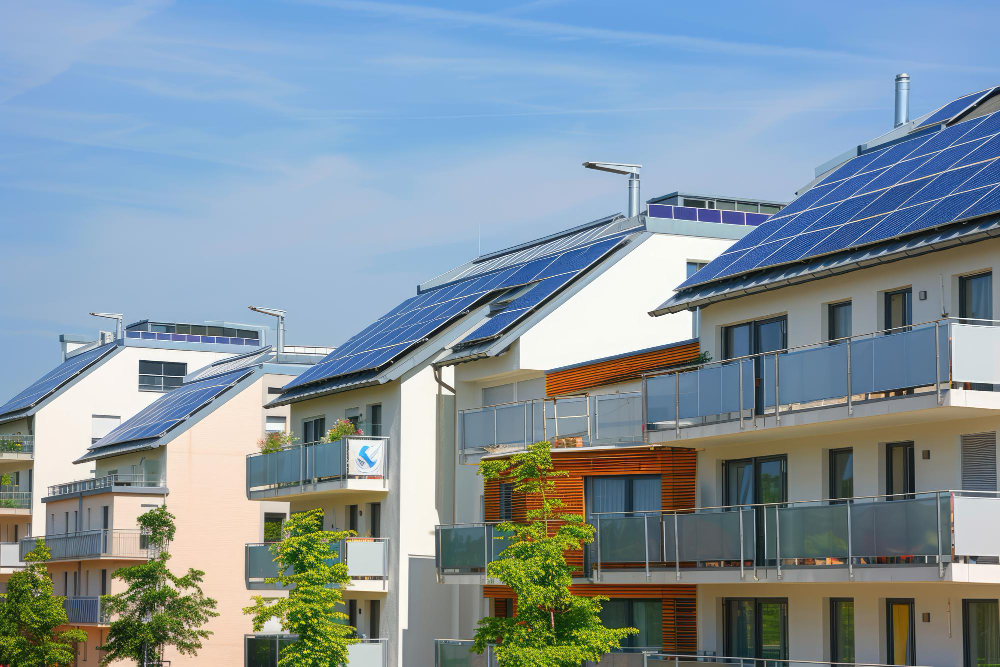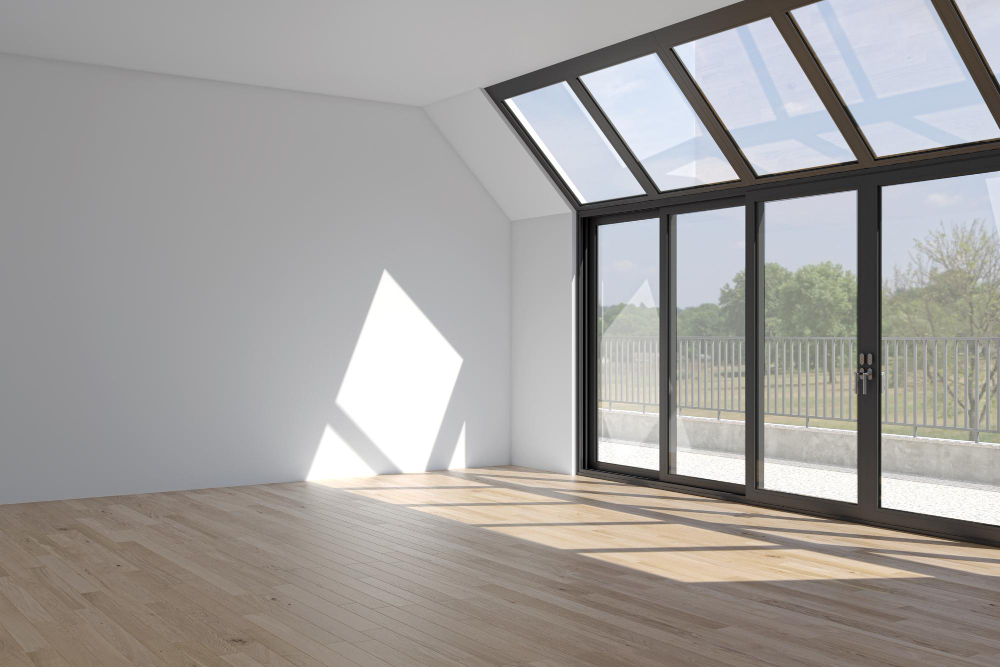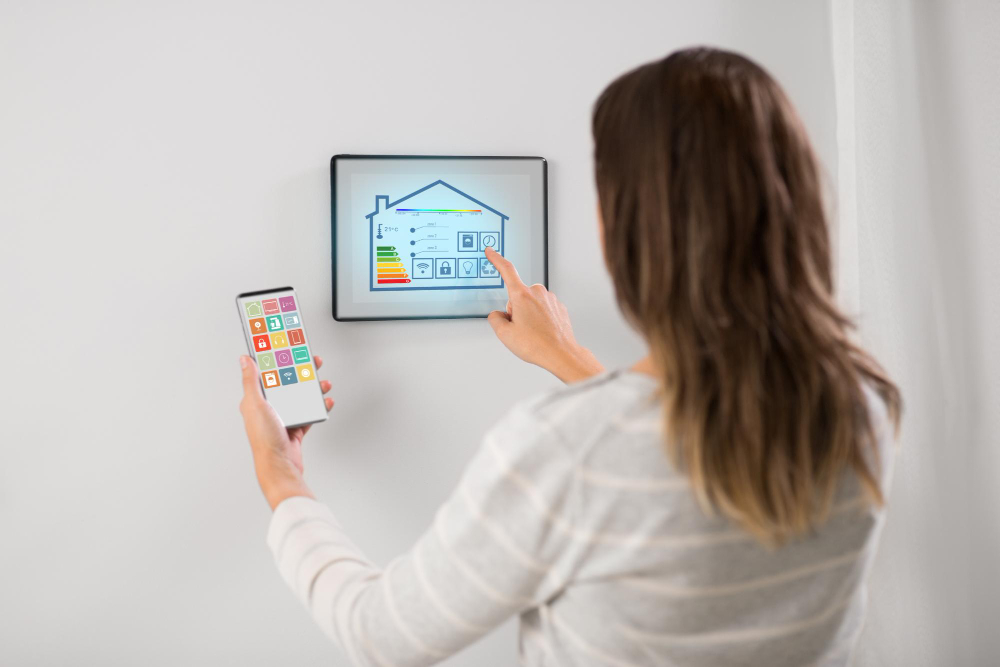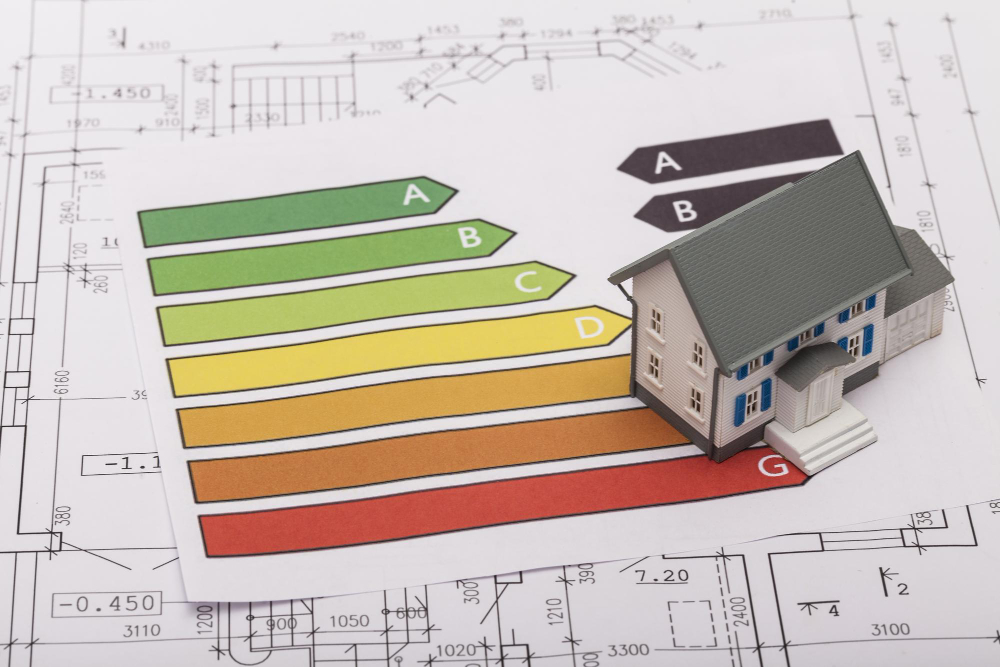The energy rating of a home es un indicador que mide la eficiencia energética de un edificio residencial.
This document proporciona información detallada sobre el consumo de energía de la vivienda, así como su impacto ambiental en términos de emisiones de dióxido de carbono (CO2).
The energy rating is expressed using a scale of letters ranging from A (the most efficient) to G (the least efficient).
This classification is based on a comprehensive evaluation of the features of construction, heating systems,
cooling, ventilation and lighting of the home, as well as the use of renewable energies.
In a world increasingly aware of the importance of sustainability and care for the environment, the energy rating of a home has become a topic of great relevance.
The energy rating of a home is a fundamental tool that we allows you to know the energy performance of our homes and to take informed decisions to improve their performance.
In this extensive article, as study of architecture to perform this type of task, we will explore in-depth the concept of the energy rating, its importance, the process of obtaining, the meaning of the letters that compose it and the benefits it can bring to the homeowners.
In addition, we will discuss the measures that can be taken to improve the energy efficiency of a house and thus obtain a better rating.

In this post, we delve into:
Importance of the energy rating
The energy rating of a home is a key element for several reasons:
- Knowledge of the energy performance: The energy rating allows owners and prospective purchasers or tenants to know precisely how the energy performance of the dwelling. This makes it easier to make informed decisions about the efficiency of the property.
- Identification of opportunities for improvement: To obtain the energy rating, you can identify the areas of the home that have a higher potential for improvement in terms of energy efficiency. This allows develop a plan of action to implement measures that reduce the consumption of energy.
- Legal requirement: In many countries, the filing of a certificate of energy efficiency is a mandatory requirement for the sale or rental of a dwelling. This document must be visible and available to potential buyers or renters.
- Contribution to sustainability: The improvement of the energy efficiency of housing plays a critical role in the reduction of the environmental impact and the fight against climate change. To reduce the energy consumption and CO2 emissions, contributing to sustainability in the individual and collective level.
- Revaluation of the property: A housing with an energy rating favorable tends to have a higher market valuebecause it represents an asset more attractive to buyers and a better long-term investment.
- Economic savings: Greater energy efficiency translates into lower electricity bills, gas and other supplies, which translates into a significant savings for the owners over time.
How do you get the energy rating of a home?
The process of obtaining the energy rating of a home implies the intervention of a technical certifier, who conducts a thorough evaluation of the characteristics of the property.
This process consists of the following steps:
- Home inspection: The technical certification visit the property and collects detailed information on their structural characteristics, systems of heating, cooling, ventilation and lighting, as well as the use of renewable energies.
- Data collection: During the inspection, the technician collects data such as the surface of the housing, the type of insulation, the efficiency of electrical appliances, the orientation of the building, among other relevant aspects.
- Calculation of energy consumption: Using the tools of calculus specialty, the technician determines the estimated energy consumption of the housing, as well as the emissions of carbon dioxide (CO2) associated with that consumption.
- Assignment of the energy rating: Based on the obtained results, the technician certification assigns an energy rating to the housing, which is expressed through a letter that goes from A (most efficient) to G (less efficient).
- The issuance of the certificate energy: Once the process is completed, the technician issues the certificate of energy efficiency, which includes the score, as well as recommendations for improving the energy performance of the dwelling.
It is important to note that the energy certificate has a validity of 10 years, after which it must be renewed.
Esto se debe a que las características de la vivienda pueden cambiar a lo largo del tiempo, ya sea por reformas, cambios en los sistemas o la incorporación de nuevas tecnologías.

The technical certification
The technical certification plays a key role in the process of obtaining the energy rating of a home. This professional must have the training and qualifications necessary to perform this task in a rigorous and precise.
The main responsibilities of the technical certification include:
- Thorough inspection: Perform a detailed inspection of the home, collecting accurate information on its structural characteristics, systems and equipment.
- Calculation of energy consumption: Use calculation tools specialized to determine the estimated energy consumption of the housing and associated CO2 emissions.
- Assignment of the rating: To analyze the collected data and to assign an energy rating of the dwelling, in accordance with the scale set.
- The issuance of the certificate: Develop and issue the certificate of energy efficiency, including the grade obtained and the recommendations to improve energy performance.
- Advice and guidance: To provide advice to owners on the measures that can be implemented to improve the energy efficiency of your home and obtain a better rating.
- Knowledge update: Keep up to date on the standards, technologies and best practices in energy efficiency, to ensure the quality and accuracy of their work.
The technical certification plays a crucial role in the process of energy rating, as their work ensures the reliability and transparency of information provided to owners and prospective buyers or tenants.
Benefits of the energy rating of a home
The obtaining of the energy rating of a home brings with it a number of significant benefits to both the homeowners and the environment. Let's look at some of the main ones:
- Economic savings:
- A house with a better energy rating tends to have a lower power consumption, which translates into bill lower electricity, gas and other supplies.
- Owners can take advantage of the savings over time, which represents a profitable investment in the long term.
- Thermal comfort:
- The improvements in the energy efficiency of a dwelling, such as better insulation or air-conditioning systems more efficient, result in greater comfort and well-being for the occupants.
- It achieves a temperature more stable and pleasant atmosphere in the interior of the house, regardless of outside weather conditions.
- Revaluation of the property:
- A housing with an energy rating favorable tend to have a higher market value, as it represents an investment more attractive to buyers.
- Energy efficiency has become an increasingly important factor when assessing the value of a property.
- Reduced environmental impact:
- By improving the energy efficiency of a home, it reduces the consumption of energy and, therefore, emissions of carbon dioxide (CO2) and other greenhouse gases.
- This individual contribution to the sustainability and the fight against climate change is fundamental to achieving a greener future and respectful with the environment.
These benefits demonstrate that the energy rating of a dwelling is not only an informational tool, but it can also have a positive impact on the finances, the comfort and the value of the property, in addition to contributing to the protection of the environment.

What do the letters a To G in the energy rating of a home?
The energy rating of a dwelling is expressed using a scale of letters ranging from a To G, where each letter represents a level of energy efficiency.
This classification is based on the estimated energy consumption of the housing and its emissions of carbon dioxide (CO2).
Let's look at the meaning of each one of these letters:
Energy rating To:
Housing with improved energy efficiency and reduced environmental impact. These properties consume very little energy and generate a minimum amount of CO2 emissions.
Energy rating B:
Housing with good energy efficiency. These properties have an energy consumption and CO2 emissions relatively low in comparison with the average.
Energy rating C, D and E:
Homes with energy efficiency media. These properties have an energy consumption and CO2 emissions within the ranges considered acceptable, but with room for improvement.
Energy rating F and G:
Homes with poor energy efficiency and greater environmental impact. These properties consume a significant amount of energy and generate high emissions of CO2, which makes them less efficient.
It is important to note that the energy rating is not based solely on the energy consumption, but also in the amount of CO2 emissions generated.
This means that a home can have a power consumption relatively low, but if you use energy sources with high emissions of CO2, its energy rating may be less favorable.
Ranges of energy consumption
Each of the letters of the energy rating corresponds to a specific range of energy consumption and CO2 emissions. These ranges vary depending on the geographic location, climate, and local regulations, but in general you can set the following parameters:
Letter To: Less than 50 kWh/m2año of energy consumption and less than 10 kg CO2/m2año emissions.
Letter B: Between 50 and 100 kWh/m2año of energy consumption, and between 10 and 20 kg CO2/m2año emissions.
Letter C: Between 100 and 150 kWh/m2año of energy consumption, and between 20 and 30 kg CO2/m2año emissions.
Letter D: Between 150 and 200 kWh/m2año of energy consumption, and between 30 and 40 kg CO2/m2año emissions.
Letter E: Between 200 and 250 kWh/m2año of energy consumption, and between 40 and 50 kg CO2/m2año emissions.
Letter F: Between 250 and 300 kWh/m2año of energy consumption, and between 50 and 60 kg CO2/m2año emissions.
Letter G: More than 300 kWh/m2año of energy consumption and more than 60 kg CO2/m2año emissions.
It is important to note that these ranges may vary slightly, depending on the regulations and the specific characteristics of each region or country.

How to improve the energy rating of a home?
While the energy rating of a home largely depends on its structural characteristics and installed systems, there are several measures that homeowners can implement to improve their energy efficiency, and, therefore, obtain a better rating.
Some of these measures include:
Improvements in the thermal insulation:
- Reinforce the insulation of the building envelope, including walls, ceilings, and floors to reduce the loss of heat and cold.
- Use insulating materials of high-efficiency, such as mineral wool, polyurethane, or fiberglass.
- To ensure proper ventilation and avoid thermal bridges.
Renewal of the woodwork:
- To replace the windows and antique doors with more efficient models, with better isolation and greater water resistance.
- Choose solutions from double glazing, or glass, low emissivity, which improve the thermal insulation.
- Install systems of solar control, such as blinds, shutters or awnings, to regulate the entry of light and heat.
Heating and cooling systems efficient:
- Replace the heating and cooling systems old with more efficient models, such as heat pumps, condensing boilers or air-conditioning systems and high-efficiency.
- Implement controls and smart thermostats that allow a more efficient management of the energy.
- Consider the installation of mechanical ventilation systems with heat recovery.
The use of renewable energy:
- Install photovoltaic solar panels for the generation of electricity from solar energy.
- Implement systems for capturing solar thermal energy for hot water production.
- To explore other options of renewable energy, such as geothermal or biomass, according to the characteristics of the housing.
Lighting upgrades:
- Replace light bulbs and conventional lighting by more efficient technologies, such as LED or fluorescent.
- Implement systems of control and automation of lighting, such as occupancy sensors or timers.
- Take maximum advantage of the natural light through a proper distribution and orientation of the space
Appliances and equipment efficient:
- Replacing appliances old models of high energy efficiency, tagged and classified To+++ or higher.
- Select equipment such as washing machines, dishwashers, refrigerators and ovens that meet the efficiency standards higher.
Management and monitoring of consumption:
- Install control systems and monitoring of the consumption of energy, as smart meters or mobile applications.
- Educate occupants on habits of consumption efficient and good practices in the home.
- Perform energy audits on a regular basis to identify areas of improvement.
These measures, implemented individually or in combination, can significantly contribute to improving the energy rating of a home.
It is important to note that the effectiveness of each of them will depend on the specific characteristics of the property and the climatic conditions of the region.
In addition, it is recommended that owners consult with experts in energy efficiencyas a technical certification or specialized companies, to obtain personalized advice and develop an improvement plan tailored to your needs and budget.

Impact of the energy rating on the property market
The energy rating of a home has acquired a growing importance in the real estate market, becoming a key factor when assessing the value and the atractibilidad of a property.
Revaluation of the property:
- A housing with an energy rating favorable, especially in categories A or B, tend to have a higher market value compared to similar properties with the worst energy efficiency.
- Buyers are increasingly willing to pay a higher price for a home that guarantees a lower spending on energy bills, and a greater thermal comfort.
- The energy rating has become a differentiator and an important asset to marketing a property.
Ease-of-sale or for rent:
- Housing with an energy rating favorable tend to have a higher demand and a greater ease-of-sale or rent in the real estate market.
- Buyers and tenants increasingly appreciate the energy efficiency of a property, as it allows them to save on their energy costs in the long term.
- In some countries, the presentation of the certificate of energy efficiency is a legal requirement for the sale or rental of a dwelling.
Funding and support:
- Some financial institutions offer more favorable conditions, such as loans or mortgages greens, for the purchase of housing with a high energy rating.
- In addition, in many countries there are programs of aid and subsidies intended to encourage the improvement of the energy efficiency of homes, which is of benefit to the owners who decide to make these investments.
In summary, the energy rating of a home has become a determining factor in the real estate market, influencing both the value of the property as on ease-of-sale, or rental.
Homeowners who invest in improving the energy efficiency of their homes can get a return on your investment through a greater appreciation and a greater demand on the part of buyers and tenants.

Impact of the energy rating in the environment
Beyond the economic benefits and comfort for the owners, the energy rating of the houses also have a significant impact on the environment.
The improvement of the energy efficiency of households plays a critical role in the fight against climate change and the reduction of the ecological footprint.
Reduction of CO2 emissions:
- A house with a better energy rating, that is to say, with a lower power consumption, it generates a lower amount of emissions of carbon dioxide (CO2) and other greenhouse gases.
- These reductions in the emissions directly contribute to the mitigation of climate change and the fulfilment of the objectives of sustainability at a global level.
Decrease in the consumption of resources:
- By improving the energy efficiency of a home, it reduces the consumption of resources such as electricity, natural gas or fossil fuels.
- This decline in the use of non-renewable natural resources contributes to the preservation of the environment and the transition to a more sustainable model for development.
Promotion of renewable energies:
- La calificación energética también incentiva la incorporación de sistemas de energías renovables, como paneles solares o calderas de biomasa, en las viviendas.
- The use of these clean energy sources and sustainable assistance to further reduce the carbon footprint of households.
Education and awareness:
- The implementation of the energy rating in the residential sector has contributed to increase the awareness and knowledge of the owners about the importance of energy efficiency.
- This higher level of information and awareness encourages the adoption of habits and practices that are more sustainable in the home, which amplifies the positive impact on the environment.
In short, the energy rating of dwellings plays a pivotal role in the transition towards a more sustainable model for development.
By improving the energy efficiency of the home, it manages to significantly reduce the emissions of greenhouse gases and the consumption of resources, thus contributing to the mitigation of climate change and the preservation of the environment.

Challenges of the energy rating
While the energy rating of dwellings presents many benefits, both for the owners as well as for the environment, there are also some challenges that must be addressed to achieve a more effective implementation and widespread.
Lack of awareness and knowledge:
- There is still a significant percentage of the population is unaware of the importance and benefits of the energy rating.
- It is necessary to intensify awareness-raising campaigns and education for owners to understand the relevance of this indicator and they will be encouraged to improve the energy efficiency of their homes.
Complexity of the process:
- The process of obtaining the energy rating can be complex and bureaucratic to some homeowners, especially those with less technical knowledge.
- It is important to simplify and expedite the process, as well as provide greater support and advice to owners during the process.
Costs of the improvements:
- The implementation of measures to improve the energy efficiency of a dwelling, such as the renewal of carpentry or the installation of renewable energy systems, may involve an initial investment significant.
- It is necessary to develop programs of aid, grants and affordable financing to facilitate the access to these improvements, especially for homeowners with less resources.
Lack of incentives and regulations:
- In some countries, the presentation of the energy performance certificate is not a mandatory requirement for the sale or rental of housing, which reduces the motivation of the owners to get the qualification.
- It is essential to strengthen the regulatory framework and to establish clear incentives that encourage the improvement of the energy efficiency of homes.
Precision of calculations:
- The precision of the estimates and the tools used to determine the energy rating may be questioned in some cases, which generates distrust in the results.
- It is important to continually improve the methods of assessment and to ensure the reliability of the data, as well as the training and accreditation of technical certification.
Adaptation to the diversity of housing:
- The characteristics and energy requirements of the housing may vary significantly depending on factors such as geographic location, type of construction, age, among others.
- It is necessary to develop systems energy rating that will fit most accurate way to this diversity, avoiding generalizations that may distort the results.
To address these challenges in a comprehensive and co-ordinated between the different actors involved, such as authorities, real estate, experts in energy efficiency and citizenship, will be crucial to achieve a more effective implementation and widespread of the energy rating of dwellings.

Frequently asked questions about the energy rating of a home
Who can apply for the energy rating of a home?
The energy rating of a home can be requested by different actors:
- Owners: The owners of a house have the power to request the evaluation and procurement of the energy rating of your property.
- Future buyers: Those who are interested in purchasing a home can apply for the energy rating as part of the buying process, with the objective of understanding the energy performance of the property.
- Landlords: Owners who wish to rent out your home must obtain the energy rating and make it available to potential tenants.
- Administrators of farms: In the case of residential buildings, administrators of estates can apply for the energy rating of the entire building.
- Promoters real estate: The developers of new housing must obtain the energy rating of the property on which to build and sell.
In summary, both existing owners and future buyers or tenants, as well as operators of buildings and the promoting companies, can apply for the energy rating of a home.
How much does it cost to get the energy rating of a home?
The cost of obtaining the energy rating of a home can vary based on several factors, among them:
- Location geographic: The price can differ between regions or countries, due to differences in labor costs and regulatory requirements.
- Size and complexity housing: Usually, the homes of greater surface area and with more complex systems will have a higher cost.
- Experience and accreditation of the technical certification: The professionals with the most experience and training tend to have higher fees.
- Additional services: Some technicians provide complementary services, any advice or suggestions for improvement, which may increase the final cost.
In general terms, the cost of obtaining the energy rating of a single-family home is usually between 200 and 500 euros, while in the case of residential buildings, the unit price may be more affordable, ranging between 50 and 200 euros.
Is it mandatory to have the energy rating of a home?
Mandatory to have the energy rating of a home varies depending on the regulations of each country or region (in Spain it is mandatory). However, in the majority of cases, the presentation of the certificate of energy efficiency is a legal requirement in certain situations:
- Sale of homes: In most countries, it is compulsory to submit the certificate of energy efficiency when you sell a home, both for new construction and for existing homes.
- Rental housing: Many regulations require that owners who wish to rent a property must obtain and submit the certificate of energy efficiency potential tenants.
- Public buildings: In the case of buildings of public ownership, such as offices, schools or hospitals, obtaining the energy rating is usually a mandatory requirement.
- New construction: For new residential construction, the presentation of the certificate of energy efficiency is a mandatory step before the delivery of the property.
It is important that owners learn about the regulations in force in your country or region, as the breach of this obligation may lead to penalties or fines.

What to do with the energy certificate?
Once it has obtained the certificate of energy efficiency of a home, it is important to know what to do with it:
- To keep the document: The landlord must keep the energy certificate in a safe manner, as this has a validity of 10 years and may be required in various situations.
- Display the certificate: In case of sale or rental of housing, energy certificate must be visible and available to potential buyers or renters.
- Submit the certificate: When conducting a real estate transaction, whether it be a purchase or a rental, the energy certificate must be delivered to the other party.
- Use the certificate as a guide: The owner can check the certificate to identify the areas of improvement in the energy efficiency of your home and to plan the necessary actions.
- To renew the certificate: When the energy certificate expires, the owner must apply for a new assessment and obtain a new certificate.
- Archiving the history: It is recommended that the owner retain a copy of all the certificates energy obtained along the time, as it may be useful to demonstrate the evolution of the energy efficiency of the housing.
In summary, the energy certificate must be kept, exhibited, presented in real-estate transactions, which is used as a guide and renewed periodically, with the purpose of maintaining up-to-date information on the energy efficiency of the housing.
How to interpret the energy certificate?
The certificate of energy efficiency of a dwelling contains detailed information that must be interpreted correctly. These are the main elements that should be taken into account:
- Energy rating: This is the most relevant information of the certificate, since it indicates the level of energy efficiency of the home by a letter that is from A (more efficient) to G (least efficient).
- Power consumption: The certificate shows the estimated energy consumption of the housing, expressed in kWh/m2año, which allows you to compare the energy performance with other real estate.
- CO2 emissions: Next to the energy consumption, the emissions of carbon dioxide (CO2) associated, in kg CO2/m2año, which reflects the environmental impact of the housing.
- Recommendations for improvement: The certificate includes specific suggestions for improving the energy efficiency of the house, such as the installation of insulationthe renewal of windows or the incorporation of renewable energies.
- Technical information: The certificate lists the features of construction, and the systems of the house, such as the surface, the type of insulation, the efficiency of the equipment, among other relevant data.
- Validity of the certificate: It is important to pay attention to the date of issuance and the validity of the certificate, which is usually 10 years.
The interpretation of the energy certificate, the property owners can understand the energy performance of your home, identify improvement opportunities, and make informed decisions to increase the efficiency and reduce the environmental impact.
Additional resources on the energy rating of a home
- IDAE (Institute for the Diversification and Saving of Energy): https://www.idae.es/
- Provides comprehensive information on the energy rating of dwellings, including the process of obtaining the certificate, the different letters and their meanings, the benefits of a good grade and tips to improve it.
- It also has an online tool to calculate the energy rating of your home.
- Ministry of Ecological Transition and Demographic Challenge: https://www.miteco.gob.es/
- Provides information on the policies and programs of the Spanish government related to the energy efficiency of homes.
- It also offers resources for consumers, such as guides and tips to save energy in the home.
- Spanish agency of Consumption, Food Safety and Nutrition (AECOSAN): https://www.endesa.com/es/luz-y-gas/luz
- Provides information on the energy labeling of appliances, which may be useful to choose appliances more energy-efficient.
- It also has an online tool to compare prices of light and gas.
- Higher council of Architects of Spain (CSCAE)): https://www.idae.es/tecnologias/eficiencia-energetica/edificacion/calificacion-energetica-de-edificios
- Provides information on the regulations and the technical requirements related to energy efficiency of the dwellings.
- Also has a directory of architects specialized in energy efficiency.
- Frequently asked questions about the energy rating of dwellings: https://www.idae.es/faq
- How to improve the energy rating of your home: https://www.idae.es/ahorra-energia/recomendaciones-para-el-ahorro-energetico-en-hogares

Conclusion on the energy rating of a home
The energy rating of the sustainable housing it has become a fundamental tool to promote energy efficiency and contribute to sustainability in the residential sector.
This indicator provides valuable information about the energy performance of the homes, allowing the owners to make informed decisions and take action to improve their efficiency.
Throughout this extensive article, we have explored in depth the concept of the energy rating, its importance, the process of obtaining, the meaning of the letters that compose it and the benefits it can bring both economic and environmental.
In addition, we have analyzed the various measures that homeowners can implement to improve the energy efficiency of their homes and obtain a better rating.
It is important to note that the energy rating has also become a growing relevance in the real estate market, becoming a a key factor when assessing the value and the atractibilidad of a property.
Also, the improvement of the energy efficiency of homes it plays a fundamental role in the fight against climate change and the reduction of the ecological footprint.
However, we have also identified some challenges that must be addressed, such as lack of awareness and knowledge, the complexity of the process, the costs of the improvements and the need to strengthen the regulatory framework and incentives.
In short, the energy rating of dwellings is presented as a valuable tool and needed to move towards a more sustainable model for development, in which households play an active role in the reduction of energy consumption and emissions of greenhouse gases.
Through the adoption of energy efficiency measures and the implementation of innovative solutions, homeowners can contribute significantly to building a greener future and resilient.




